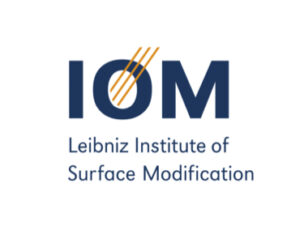Ott
The structural flexibility of amyloid peptides comprises the extraordinary property to self-assemble into extended fibrillar structures. Molecular insights into the structure and composition of prefibrillar aggregates were essential for understanding the overall aggregation process. This project aimed to gain a more detailed understanding of the early prefibrillar growth process and the influence of the contiguous environment through the use of single-molecule studies. The resulting distributions of small transient aggregates, called oligomers, along the time course of fibrillation were used to study the pathways of aggregation. Specific properties of the detected oligomers, such as the propensity to disassemble or interact with hydrophobic surfaces, were examined to study their thermodynamic stabilities and increased hydrophobicity. Furthermore, it was demonstrated that the photophysical properties of the fluorescence tags themselves, such as fluorescence lifetime, could distinguish between potentially unstructured oligomers and fibrillar assemblies. Additionally, aggregates that were not consumed by the fibrillation process indicated off-pathway processes and a reduced efficiency of fibrillation.
Methods of single-molecule and time-resolved fluorescence spectroscopy were established to study the early stages of amyloid self-assembly. The influence of commonly used fluorescence tags on the properties of oligomers and fibrils of N-terminal labeled Aβ(1-40) and Aβ(1-42) peptides, which are related to Alzheimer’s disease, was investigated. It was found that the solubility and size distributions of the formed oligomers were influenced not only by the length of the peptides but also by specific fluorophore-peptide interactions. Importantly, a fluorescence tag with the least impact on the peptide aggregation was identified for future work. In preparation for detailed investigations of the effects of macromolecular crowding on early aggregates and the overall fibrillation process, the properties of highly concentrated solutions of globular proteins were studied using a combined approach of small-angle X-ray scattering experiments, NMR, and fluorescence correlation spectroscopy.
The study aimed to be extended in two directions: Firstly, the methodological expertise would be applied to a new peptide, the human parathyroid hormone (PTH), which belongs to the family of functional amyloids. Secondly, the effects of external constraints on amyloid aggregation would be examined. Unlike Aβ peptides, the aggregation process of PTH was reversible, providing insights into the potential key for the non-toxicity of the aggregates – lower thermodynamic stability. Specifically, the size of the critical nucleus would be determined, and its relation to monomer concentration, aggregate size, and propensity for disassembly would be studied. The comparably high monomer concentrations required for PTH fibrillation indicated reduced stabilities of PTH oligomers. Complementary techniques such as fluorescence spectroscopy, small and wide-angle X-ray scattering (SAXS, WAXS), and imaging techniques (Transmission electron microscopy (TEM), atomic force microscopy (AFM)) would be used to characterize the size, structure, and morphology of the formed aggregates. In the second part of the project, the influence of external constraints and specific interactions would be addressed using different proteins and crowding agents. Binding and unbinding kinetics of the amyloid protein and its oligomers with protein crowders would be investigated using single-molecule Förster-resonance energy transfer (FRET) methods in solution. These experiments would help quantify specific interactions and excluded volume effects. Ultimately, comparing the aggregation mechanisms of Aβ peptides and PTH, as well as their potentially different response to external constraints, would deepen the general understanding of the complex interplay between amyloid aggregates and their close environment.
Highlighted Publications:
- Luca M. Lauth, Bruno Voigt, Twinkle Bhatia, Lisa Machner, Jochen Balbach, Maria Ott, Heparin promotes rapid fibrillation of the basic parathyroid hormone at physiological pH. FEBS Letters 596, 2928–2939 (2022)
- J. Wägele, S. De Sio, B. Voigt, J. Balbach, and M. Ott, How Fluorescent Tags Modify Oligomer Size Distributions of the Alzheimer Peptide Biophys. J. 116, 227-238 (2019)
- De Sio, S, Wägele J, Bhatia, T.,Voigt, B, Lilie H, Ott M. Inherent Adaptivity of Alzheimer Peptides to Crowded Environments, Macromolecular Bioscience.
Other publications of this group:Silvia De Sio, Jana Waegele, Twinkle Bhatia, Bruno Voigt, Hauke Lilie, Maria Ott,Inherent Adaptivity of Alzheimer Peptides to Crowded EnvironmentsMacromol ...
Read MoreLuca M. Lauth, Bruno Voigt, Twinkle Bhatia, Lisa Machner, Jochen Balbach, Maria Ott,Heparin promotes rapid fibrillation of the basic parathyroid ...
Read More






